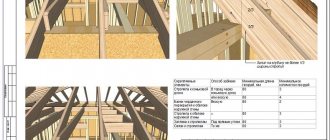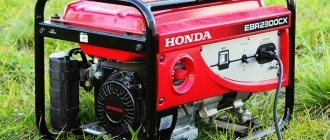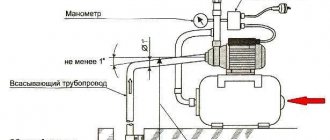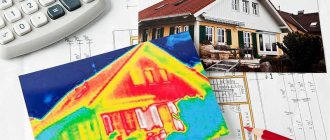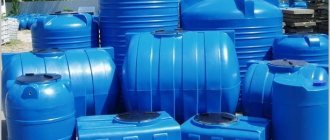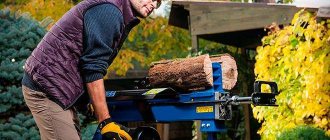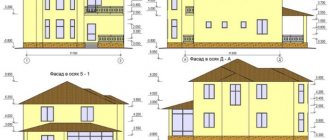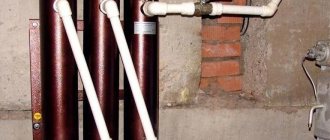- Professional installation of turnkey autonomous sewerage.
- Free visit of a specialist and selection of equipment.
- Supervised installation - from 7,875 rubles. Installation - from 16,000 rubles.
- All equipment is always available in our warehouse; we are official dealers of all well-known manufacturers.
- Warranty for equipment and work.
- Installment plan without overpayments.
- Free storage.
The most popular manufacturers of autonomous cleaning stations on the Russian market are:
Sewerage GREENLOS
Sewerage GREENLOS
— new
installations from a Russian trading and manufacturing enterprise.
GREENLOS installations
were created by experts in the field of sewerage,
due to this, all the shortcomings of competitors were taken into account. Particular attention in production is paid to the use of modern advanced materials to prevent the station from squeezing and floating even in conditions of high groundwater.
Another distinctive advantage of GREENLOS septic tanks is the modern design of the GREENLOS body
making
the installation process easier and cheaper,
and
minimizing
the need for station maintenance.
Sewerage GRINLOS has a wide range of products for any objects and various soils. The range includes volatile and non-volatile series with different capacities, gravity and forced models with standard and low housing. Modular stations for servicing groups of cottages, commercial or industrial facilities.
Also in the GREENLOS assortment there are caissons made of monolithic polypropylene 8mm thick (for use in areas with any hydrological conditions) and plastic cellars intended for use in household (food storage - vegetables, pickles and household supplies).
Advantages
- High structural strength due to the cylindrical body and the use of the most modern materials.
- Simplicity and cheaper installation.
- Low operating costs – infrequent maintenance;
- All LOS GREENLOS have ISO 9001 certificates and have also successfully passed quality and safety examinations.
- Service life of 50 years due to the use of thick and high-quality polypropylene
Popular GREENLOS models
Autonomous sewage system GREENLOS Aqua 3
- Number of users 3
- Productivity 0.6 m3/day
- Salvo release 150 l
- Inset depth 60 cm
Price: 93 510
R.
–10%
Autonomous sewage system GREENLOS Aqua 3 low building Pr
- Number of users 3
- Productivity 0.6 m3/day
- Salvo release 150 l
- Inset depth 60 cm
Price: 105 660
R.
–10%
Autonomous sewage system GREENLOS Aqua 5 Pr
- Number of users 5
- Capacity 1 m3/day
- Salvo discharge 300 l
- Inset depth 60 cm
Price: 110 880
R.
–10%
Autonomous sewage system GREENLOS Aero 5
- Number of users 5
- Capacity 1 m3/day
- Salvo discharge 300 l
- Inset depth 60 cm
Price: 108 630
R.
–10%
Autonomous sewage system GREENLOS Aqua 8
- Number of users 8
- Capacity 1.4 m3/day
- Salvo release 400 l
- Inset depth 60 cm
Price: 126 900
R.
–10%
Autonomous sewage system GREENLOS Storage tank 10
- Number of users 10
- Capacity 2 m3/day
- Salvo discharge 560 l
- Inset depth 60 cm
Price: 113 400
R.
–10%
Sewerage Topas
Topas has long become a familiar name in the lists of leading manufacturers of autonomous sewage systems. Are released. They have their own on-line support and post-warranty service. They often provide discounts, and the cost starts from 71,000 rubles for 4 people. The range is very wide, for various houses to cottage villages.
They are characterized by low energy consumption. They have a wastewater treatment rate of 98%.
Thanks to the equipment installed in them, stations (septic tanks) effectively neutralize odors, show good performance and highly effective filtration. Reliable case.
Very popular septic tanks, good service, trouble-free repairs, ease of operation and low maintenance requirements. Equipped with compressors. One compressor is a cheaper model with the letter “C”. All classic models do not contain such a letter in the name and have 2 compressors. Can be connected to pipes at a depth of more than 1.5 meters. Topas models can be supplemented with a grease trap, solenoid valve, and ultraviolet post-treatment unit to make it possible to discharge the treated wastewater into water bodies.
The company’s product range also includes the Topaero line - installations that accept an increased volume of salvo discharge. Convenient to use when installing an autonomous sewer system for several houses.
Advantages
- The wastewater is 98% purified, so the water is safe for animals and plants;
- No unpleasant odor and noiselessness;
- Possibility of installation in any type of soil;
- Low maintenance requirements and service life of Topas is at least 50 years;
- Wide range of Topas models;
- Space saving - Topas does not take up much space.
Popular Topas models
Autonomous sewage system TOPAS 4
- Number of users 4
- Productivity 0.8 m3/day
- Salvo release 175 l
- Inset depth 40 - 85 cm
Price: 98 730
R.
–10%
Autonomous sewage system TOPAS 4 Pr
- Number of users 4
- Productivity 0.8 m3/day
- Salvo release 175 l
- Inset depth 40 - 85 cm
Price: 111 510
R.
–10%
Autonomous sewage system TOPAS 5
- Number of users 5
- Capacity 1 m3/day
- Salvo discharge 220 l
- Inset depth 40 - 90 cm
Price: 117 810
R.
–10%
Autonomous sewage system TOPAS 6
- Number of users 6
- Capacity 1.15 m3/day
- Salvo release 250 l
- Inset depth 40 - 95 cm
Price: 120 330
R.
–10%
Autonomous sewage system TOPAS 8
- Number of users 8
- Capacity 1.5 m3/day
- Salvo release 440 l
- Inset depth 40 - 95 cm
Price: 141 210
R.
–10%
Autonomous sewage system TOPAS 10
- Number of users 10
- Capacity 2 m3/day
- Salvo discharge 760 l
- Inset depth 40 - 95 cm
Price: 187 470
R.
–10%
Sewerage Unilos-Astra
Unilos Astra - stations that provide real comfort to their users and have achieved almost 100% cleaning level. Are being produced. They combine two types of cleaning - mechanical and biological. Designed for long-term operation. They undergo a very thorough inspection before sale. Autonomous sewage system Unilos is well adapted for operation in Russian conditions. They have good reviews from users who have already purchased them.
Also a very good indicator of the strength of the case is the walls and partitions made of polypropylene, with a minimum thickness of 20 mm. Among the design features is the ability to be equipped with a post-treatment unit and a built-in sewage pumping station (SPS). Thanks to this, the output is the purest process water possible.
The stations are represented by a wide range of models. Depending on the modification, they vary depending on the pipeline length and burial depth. Insulated models are produced for cold climate zones.
Prices for stations from this manufacturer start from 62,000 rubles.
Advantages
- Deep biological wastewater treatment - 98%;
- Sealed housing that does not allow unpleasant odors to pass through;
- Silent operation of the station;
- Automatic operation of the station, which does not require constant monitoring;
- Durable, water-permeable body, no corrosion;
- Durability and reliability - service life of 50 years.
Popular models Unilos Astra
Autonomous sewage system Astra 3
- Number of users 3
- Productivity 0.6 m3/day
- Salvo release 150 l
- Inset depth 45 - 60 cm
Price: 93 150
R.
–10%
Autonomous sewage system Astra 5
- Number of users 5
- Capacity 1 m3/day
- Salvo release 250 l
- Inset depth 45 - 85 cm
Price: 113 940
R.
–10%
Autonomous sewage system Astra 5 Long
- Number of users 5
- Capacity 1 m3/day
- Salvo release 250 l
- Inset depth 101 - 150 cm
Price: 134 550
R.
–10%
Autonomous sewage system Astra 7 PR
- Number of users 7
- Capacity 1.4 m3/day
- Salvo discharge 300 l
- Inset depth 45 - 85 cm
Price: 131 580
R.
–10%
Autonomous sewage system Astra 8
- Number of users 8
- Capacity 1.6 m3/day
- Salvo release 350 l
- Inset depth 45 - 85 cm
Price: 136 800
R.
–10%
Autonomous sewage system Astra 10
- Number of users 10
- Capacity 2 m3/day
- Salvo release 550 l
- Inset depth 45 - 85 cm
Price: 182 250
R.
–10%
Sewerage Volgar
Volgar - deep wastewater treatment stations that meet all consumer requirements. Autonomous sewers Volgar are used for wastewater treatment, both for country houses and for other buildings for various purposes. Septic tanks work in all types of soil and in all climatic conditions. All structural elements are made of homogeneous polypropylene, which avoids corrosion. The cost of autonomous Volgar stations starts from 58,050 rubles for 3 people.
You can choose a Volgar septic tank with forced or gravity drainage of purified water. Options for water drainage depend on the type of soil at the installation site, as well as on the location relative to residential buildings, wells, sanitary protection zones and specially protected objects. Gravity drainage of water is recommended in soils such as sand and sandy loam. Forced drainage – in loam, clay.
Volgar autonomous sewers are suitable for year-round use. The stations purify water by 98%. Clean water can be used for irrigation and is safe for animals. Energy consumption is also reduced since only one compressor is required. Volgar autonomous sewers are compact, do not require high maintenance costs and are affordable.
Advantages
- The wastewater treatment rate reaches 98%;
- Suitable for any type of soil and climate conditions;
- The durable cylindrical body is not afraid of soil pressure;
- Small size, compactness of the station;
- Does not smell even close up due to the tightness of the case;
- Easy to install and maintain the station;
- Long service life - at least 50 years.
Popular Volgar models
Autonomous sewerage system Volgar 3 2030 C
- Number of users 3
- Productivity 0.6 m3/day
- Salvo release 190 l
Price: 92 700
R.
–10%
Autonomous sewerage Volgar GARDA 3 2200 C
- Number of users 3
- Productivity 0.6 m3/day
- Salvo release 180 l
Price: 84 600
R.
–10%
Autonomous sewerage Volgar GARDA 4 2400 C
- Number of users 4
- Productivity 0.8 m3/day
- Salvo discharge 210 l
Price: 88 830
R.
–10%
Autonomous sewerage Volgar 5 2360 C
- Number of users 5
- Capacity 1 m3/day
- Salvo release 280 l
Price: 100 800
R.
–10%
Autonomous sewerage Volgar 8 2360 C
- Number of users 8
- Capacity 1.6 m3/day
- Salvo discharge 520 l
Price: 124 560
R.
–10%
Autonomous sewerage Volgar 10 2360 C
- Number of users 10
- Capacity 2 m3/day
- Salvo release 690 l
Price: 153 900
R.
–10%
cesspool
Constructing a cesspool is the simplest way to make an autonomous drain in your home with your own hands.
Device
The design is simple - it is a sealed container dug into the ground on the territory of a private house. All wastewater is drained into this container through the collector. The pipeline is laid in a layer of soil that is not subject to freezing, otherwise the pipeline will need to be insulated.
Household waste storage facilities are equipped in accordance with the following standards:
- The distance from them to the water main is at least 10 meters, to the well - 20 m, to the boundaries of the site - 1 meter.
- The depth of the hole depends on the passage of groundwater, but a maximum of 3 m.
- Location from buildings, at a distance of at least 10 m, otherwise there is a risk of undermining the foundation.
Drives are often made from:
- brick - only the ceramic type is suitable, since it is able to withstand aggressive environments, the container is made of a round shape;
- reinforced concrete rings - their use allows you to make a durable structure, but installation requires construction equipment;
- plastic containers - only those with thick walls that can withstand exposure to chemicals are suitable;
- concrete monolithic structure - constructed on site from cement-concrete composition and reinforcement.
Operating principle and maintenance
The system operates as follows: all sewage water flows through the main pipes into a container. The accumulated wastewater is pumped out using sewage disposal equipment. This should be done as the tank is filled, but always every six months. And once every six months it is necessary to carry out disinfection with special compounds.
According to the standards, wastewater should not reach 0.35 cm to the surface of the container. Since, when the tank is overfilled, liquid leakage may occur, resulting in contamination of the soil and its aquifers.
Advantages and disadvantages
The advantages of cesspools located in areas adjacent to a private house include:
- The storage tank is sealed, which prevents soil contamination;
- Ease of installation - the ability to build a structure with your own hands;
- Low construction costs;
- Energy independence of the system.
Flaws:
- need for periodic cleaning;
- the model is only suitable for houses with temporary residence and a small number of residents, since with a wastewater volume of 1 cubic meter, even large containers will fill quickly and will need to be cleaned several times a week, and this is not cheap;
- the presence of foul odors during drainage;
- the need for free space for access for vacuum cleaners;
- It is not possible to develop it with nearby groundwater flowing.
Sewerage Alta Bio
Alta Bio autonomous sewage systems are compact, safe and durable wastewater treatment plants, manufactured by Alta Group. Thanks to multi-stage purification, the output water is clear and has no unpleasant odor, and it can also be reused. The stations are not subject to corrosion, as they are made of polypropylene or polyethylene with a body thickness of 8 mm. The big advantage is that Alta Bio septic tanks do not require preservation for the winter; you just need to turn off the power supply.
Alta Bio septic tanks have different models that are designed for different numbers of people. Options for any type of soil are also presented. Alta Bio + models are designed for clay soils with high groundwater levels. Alta Bio models without markings are installed in sandy soil.
Prices for septic tanks start from 74,000 rubles. The stations are designed for long-term operation, since the service life of the Alta Bio autonomous sewage system is 50 years.
Advantages
- High level of wastewater purification - 98%, thanks to the passage of wastewater through three settling tanks;
- Non-volatility – if there is a power outage, Alta Bio will continue to work automatically;
- It is possible to enable additional UV cleaning;
- Household waste does not affect the operation of the Alta Bio station;
- The appearance of unpleasant odors is excluded;
- Service life – 60 years.
Popular Alta Bio models
Autonomous sewage system Alta Bio 3
- Number of users 3
- Productivity 0.6 m3/day
- Salvo release 120 l
Price: 98 500
R.
Autonomous sewage system Alta Bio 3 +
- Number of users 3
- Productivity 0.6 m3/day
- Salvo release 120 l
Price: 130 000
R.
Autonomous sewage system Alta Bio 5
- Number of users 5
- Capacity 1 m3/day
- Salvo discharge 210 l
Price: 127 000
R.
Autonomous sewage system Alta Bio 5 + OR
- Number of users 5
- Capacity 1 m3/day
- Salvo discharge 210 l
Price: 159 000
R.
Autonomous sewage system Alta Bio 5 Low
- Number of users 5
- Capacity 1 m3/day
- Salvo discharge 210 l
Price: 127 000
R.
Autonomous sewage system Alta Bio 7
- Number of users 7
- Capacity 1.4 m3/day
- Salvo release 270 l
Price: 155 000
R.
What is it, what types are there?
Autonomous sewage systems make it possible to solve the issue of disposal of household waste even in the absence of centralized networks nearby. The device includes:
- internal wiring;
- external pipeline;
- design for collection and disposal of wastewater.
There are three types of systems:
- cesspools;
- septic tanks;
- local treatment facilities (WTP).
ERGOBOX sewerage
Ergobox stations are modern autonomous sewer systems that are ideal for a country house. – manufacturer of these stations. The septic tank provides deep wastewater treatment - 98%. The weight of the equipment does not exceed 150 kg. The sealed polyethylene body without seams is very durable and does not undergo deformation.
Autonomous sewers are available in two versions: with gravity and with forced drainage. Gravity discharge septic tanks are designed for areas with normal groundwater levels. Forced release stations are used for areas with high groundwater levels.
The cost of Ergobox stations starts from 58,900 rubles. The septic tank is easy to use and has a service life of 50 years. Ergobox autonomous sewers are durable, high-performance and undemanding in operation.
Advantages
- Multi-stage wastewater treatment – 98%;
- Lack of sewer odors due to the high degree of tightness of the housing;
- Invulnerability to corrosion due to the high-quality material of the Ergobox station;
- Reliable retention of the Ergobox station in the ground;
- Ergobox is suitable for any type of soil on the site;
- Long service life - 50 years or more.
Popular ERGOBOX models
Autonomous sewage system ERGOBOX 3 PR
- Number of users 3
- Productivity 0.6 m3/day
- Salvo release 180 l
- Inset depth 90 cm
Price: 81 600
R.
Autonomous sewage system ERGOBOX 4 S
- Number of users 4
- Productivity 0.8 m3/day
- Salvo discharge 220 l
- Inset depth 90 cm
Price: 79 900
R.
Autonomous sewage system ERGOBOX 4 PR
- Number of users 4
- Productivity 0.8 m3/day
- Salvo discharge 220 l
- Inset depth 90 cm
Price: 86 900
R.
Autonomous sewage system ERGOBOX 6 S
- Number of users 6
- Productivity 1.2 m3/day
- Salvo discharge 300 l
- Inset depth 90 cm
Price: 93 900
R.
Autonomous sewage system ERGOBOX 8 S
- Number of users 8
- Capacity 1.6 m3/day
- Salvo release 450 l
- Inset depth 90 cm
Price: 111 100
R.
Autonomous sewage system ERGOBOX 10 S
- Number of users 10
- Capacity 1.9 m3/day
- Salvo release 550 l
- Inset depth 90 cm
Price: 127 900
R.
Selection of sewer station (septic tank)
Septic tank with infiltrator
To save space on the site, infiltrators are used instead of drainage pipes. They are a plastic box with perforated walls. The clarified liquid is supplied to the top of the device and distributed over the entire surface. The infiltrator is installed on a gravel bed that acts as a filter. Works effectively on heavy soils that do not absorb water well. Able to cope with the simultaneous discharge of large quantities of wastewater.
Scheme of operation of a septic tank with an infiltrator.
There are 2 types of septic tanks with infiltrates: with and without an intermediate tank. The latter option is used if it is impossible to supply water to the filtration device by gravity.
To force the clarified liquid to be transported into the tank, a submersible sewage pump is installed, which pumps out water automatically.
Why professional installation of autonomous sewerage?
Installation of an autonomous sewer system itself is simple and does not require large expenses, but equipment and skills are required. An installation error can lead to very high costs in the future. And most importantly, there is no warranty when installing it yourself.
Stages of work:
- Mark a place in the ground, dig a pit and prepare everything for further pipe laying;
- Install a septic tank;
- Connect to the pipe system, hermetically sealing the entry and exit points from the station;
- Backfill the pit and trenches. When filling the pit, fill the station with water;
- Install and connect the pump and compressor;
- Connect to the electrical network;
- Put the sewerage station into operation.
To save money, you can complete the first, second and fourth points yourself by studying the technical data sheet of the treatment plant, and order installation supervision, direct installation of the station and its connection. But be prepared that you will have to read a lot, study the site and design a drainage system, dig a hole of the required size, prepare a trench for the pipeline, order sand, etc. equipment. It is necessary to comply with all SNiP standards and remember the rules for laying water supply and sewer pipes.
The service life of septic tanks is more than 50 years, and only competently carried out work guarantees operation during this time. Therefore, an autonomous sewerage system with turnkey installation is a more profitable solution than self-installation. Professional engineers are familiar with all the nuances of working with wastewater treatment plants, in different types of soil and in different areas. We also recommend purchasing the station and ordering its installation only from official dealers of the manufacturers.
Turnkey autonomous sewerage from the PORT company is a guarantee of professional installation and assistance at all stages of purchase and installation.
Sewer maintenance
Further maintenance is quite simple. Regular cleaning is important
– according to manufacturers’ passports, but
at least once a year
. During the warranty period - strictly according to the passport. It is necessary to periodically measure the concentration of sludge and remove it. It is worth monitoring the appearance of solids inside and traces of corrosion.
The operation of the compressor also needs to be checked at least once every 3 years.
If you have concerns about the operation of the septic tank, or the alarm has gone off, you should call specialists.
A one-time station maintenance visit includes:
- Diagnostics of the operation of the sewerage station;
- Pumping out excess sludge and solids;
- Cleaning the station inside: filters, pumps, hair trap, grease trap;
- Cleaning air duct nozzles;
- Washing the interior walls.
Service and support
365 days a year!
from 5,000 rubles
20% discount
For annual maintenance upon signing a contract on the day of installation!
Storage containers
Typically, large-volume polymer containers are used to collect sewage, which are buried underground. A sewer pipeline is connected to them from the house at a slope, through which contaminated liquid is transported.
You can also make a storage tank for a private home yourself from concrete well rings with a lock, placing them on a round slab and covering with a top lid with a hatch. As a result, a sealed concrete well will be obtained, part of the wastewater from which will go into the ground through moisture-absorbing concrete walls.
The storage container is periodically emptied as it is filled, calling a sewer truck for this purpose.
It is rational to use waste collection tanks in summer cottages with periodic presence of people. In this case, the tank will not have to be emptied so often, which is compatible in terms of costs with the installation of more complex and expensive treatment facilities.
Operating principle of autonomous systems
Modern septic tanks are based on multi-stage filtration of wastewater in a continuous mode. The internal space of the VOC is divided into parts:
- hermetically sealed or interconnected settling chambers;
- sections with equipment and measuring instruments.
The software monitors the state of the system. Pumps pump water from one chamber to another. The compressor is responsible for providing oxygen. Technologies involved in the work:
- mechanical filtration during the supply and settling of wastewater;
- biological processing of sludge by aerobic bacteria;
- additional cleaning.
Filters trap solid particles and grease. In addition to mechanical cleaning, colonies of bacteria work in special chambers. The result of VOC operation is clean water and a small mass of sludge.
After installation, bacterial strains are placed in the receiving compartment. Protozoa reproduce in the presence of oxygen in the atmosphere and the presence of sediment (silt). During biological treatment, there is no release of hydrogen sulfide: the sewer system operates odorless.
The durability of the equipment depends on the strength of the housing. The casing can withstand significant mechanical loads and is resistant to soil chemicals. If the owner follows the recommendations of specialists, the device will work for 50 years (without dismantling).
After installation and connection of communications, the factory system is ready for operation. Among the most popular product brands: Topas, Astra, Volgar, Alta Bio, ERGOBOX
Septic tank with biofilter
These devices belong to biotreatment systems. Due to the fact that it is impossible to manufacture such a septic tank, factory-made products are installed at the sites. A cleaning device with a biofilter consists of the following elements:
- container with cameras;
- membrane;
- biofilter with loading;
- mesh filter;
- inspection hatches.
The biofilter contains a backfill made of non-rotting materials (synthetic fibers, expanded clay, etc.). A film consisting of anaerobic organisms forms on their surface.
Household waste serves as a breeding ground. When the wastewater enters the storage tank, it settles and is freed from solid particles.
The liquid cleared of suspended matter flows through a perforated diaphragm into a settling tank and through a mesh filter into the compartment with a biofilter. It breaks down organic compounds into water and simple components.
The degree of purification reaches 98%. The resulting filtrate can be used for technical purposes or discharged into sewers. A septic tank with bio-treatment must be constantly replenished with waste, because otherwise the bacteria will die in 10-15 days. During the operation of the device, periodic colonization of the colony with microorganisms is required.
How does an autonomous sewer work?
- Reception chamber
- Coarse filter
- Main airlift
- Aerotank
- Secondary settling tank of aeration tank
- Storage tank for forced removal of treated waste
- Airlift recycling
- Sludge stabilizer
- Secondary sludge stabilizer settling tank
- Service airlift
- Compressor
- Sealed cable glands
Local treatment facilities Eurobion, Ital Antey and Crystal (receiving chamber - aeration tank).
A separate group of stations in which aeration occurs in the receiving chamber. Effluents begin to be purified without averaging their composition and concentration. From the receiving chamber, water flows into the sludge stabilizer and into the secondary settling tank. From the secondary settling tank, the effluent is returned to the receiving chamber for a new cleaning cycle.
Peculiarities:
- The receiving chamber serves as an aeration tank;
- Overflows between chambers are gravity-fed.
Advantages:
- Reliable operation, minimal chance of blockages.
- The Eurobion sewerage system has the largest volley discharge compared to others.
- In the Eurobion station, the chambers are arranged vertically and all chambers communicate directly with each other, without overflow. Eurobion also has a patented Aerosliv system for dosed drainage.
- The Crystal sewer has a conical body, from which it is convenient to pump out sludge.
Flaws:
- Long time to get back to work;
- Sensitivity to effluent composition. Not recommended for seasonal or short-term stays.
The principle of operation of sewerage in a country house
The inlet filter does not allow large waste to pass through. In the first compartment, processes take place: the initial purification of wastewater from mechanical particles and the capture of traces of fat.
The second stage is the processing of sludge by aerobic microorganisms. Sludge is a breeding ground for bacteria. The result of active biofiltration is wastewater purification by 80%.
The third stage is anaerobic processing of sewage waste. Fine cleaning neutralizes microorganisms that did not react in the second stage. There are combined systems that ensure the coexistence of aerobic and anaerobic bacteria.
Additional processing takes place at the finish line. The liquid is passed through volcanic powder. The treated wastewater is discharged into a tunnel to be directed to a storm drain or used for domestic needs.
Septic tank with filtration field
Increasing requirements of environmental standards regarding the disposal of household wastewater have led to an improvement in the design of autonomous sewage treatment devices. The filtration field as a drainage device made it possible not only to improve the quality of liquid waste treatment, but also to increase the overall performance of the system. This structure includes:
- storage device;
- settling tank (1 or several);
- distribution capacity;
- perforated drainage pipe system.
An example of the functioning of a septic tank with filtration fields.
The wastewater is accumulated in a special container, in which solid undissolved particles are separated. The partially purified liquid enters the settling tank, where the process of separating suspensions and precipitating them occurs.
The clarified water flows either into the next settling tank (if available) or into the distribution tank. From it, the liquid enters the drainage pipes and enters the soil through holes and sand and gravel backfill.
Some designs are equipped with a lower row of perforated devices to collect the purified filtrate. It accumulates in a collection well and is supplied to technical needs by a drainage pump. The area of the filtration field is about 30 m².
This sewage system is effective on large areas and light soils (sand, sandy loam). According to SanPiN, growing fruit crops in drainage fields is prohibited due to the possibility of accumulation of substances hazardous to health in fruits.
